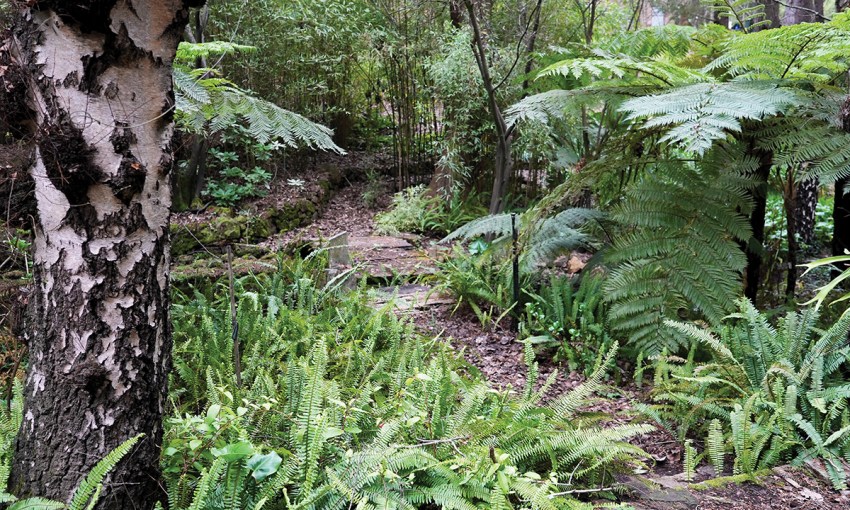What began as a spontaneous purchase 20 years ago has become a crusade to breathe much needed new life into an Adelaide Hills property.
Open garden: Beverina, Bridgewater
There are a number of fascinating stories Beverina could tell; not least among them is how Drew Dawson and Josephine Peters came to purchase the four hectares at Bridgewater.
In 2001, the couple casually visited an open inspection at the property while on a drive though the Adelaide Hills – with no intention of buying. However, Drew’s curiosity was piqued enough to attend the auction. Not trusting his potentially impetuous nature, Josephine sent her brother to chaperone. It didn’t work. Upon seeing the property, Josephine’s brother turned to Drew and told him to simply buy it.
Upon his return home, Josephine asked who the successful bidder was. Drew casually explained that the new owners were a lovely couple; a doctor and an academic from West Lakes. It slowly dawned on an unsuspecting Josephine that they were indeed the new owners. New owners with a lot to do.
Apart from established trees and a thicket of blackberries, the property also came with a castle, complete with turrets and drawbridge. The home was built in the 1920s by Dr Edwards, a somewhat eccentric Scottish dentist who was allegedly part of the Sydney Castlecrag “set” that included Walter and Marion Burley Griffin. The stone used to construct the house was cut from the three quarries located on the land.
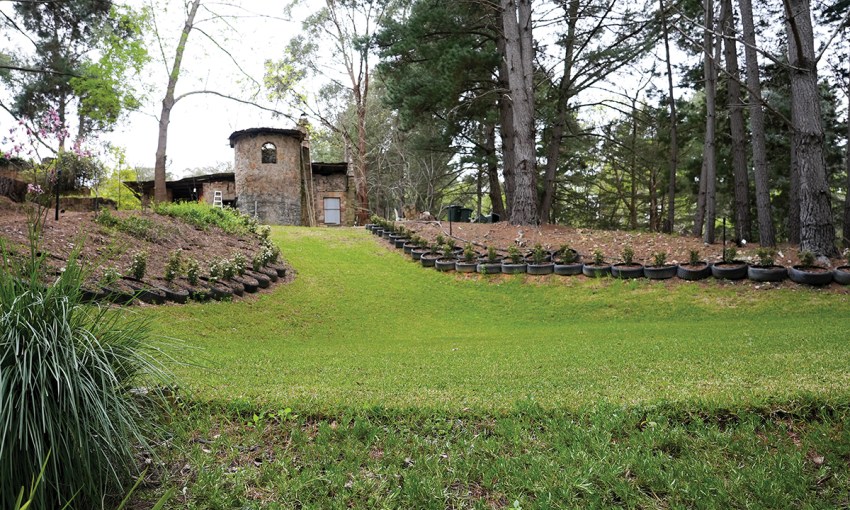
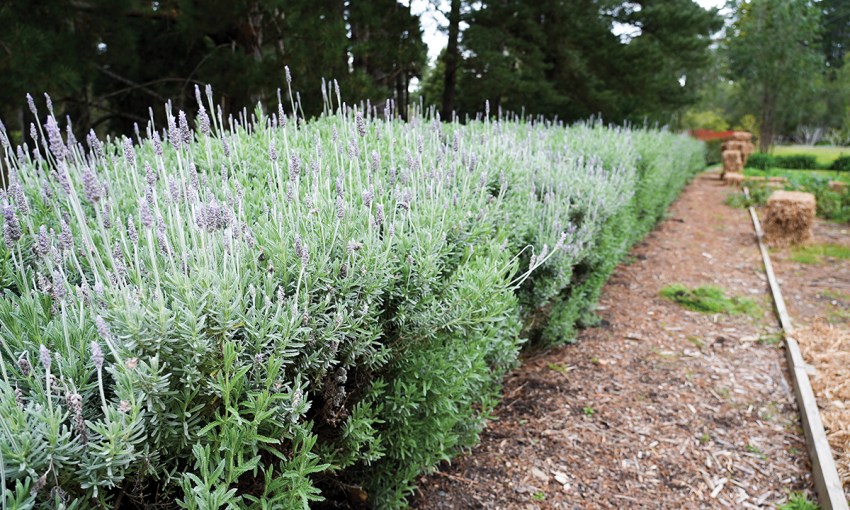
The home’s bohemian lineage continued with next owner Viktor Mednis. A well-known Latvian born contemporary artist, he worked as an industrial designer and artist in Adelaide and established a studio and gallery on this property in 1971.
Successive years of garden neglect allowed a tsunami of blackberries to invade and establish. In the first five years of ownership, Drew and Josephine (along with some valued helpers) spent weekends and spare days working through the sharp tangle, cutting back plants and poisoning off the stumps. While hard, this important work was integral to the garden’s evolution.
Well versed in permaculture principles, the couple has set out to create a garden attuned and adapted to the local environment.
Faced with steep slopes and up to one metre of rainfall annually, the solution to avoiding serious soil erosion was to reshape the hillsides into terraces, or benches, to slow the runoff and provide an opportunity for this valuable water to soak in or be channelled and harvested. Over the past 10 years, tens of thousands of tonnes of earth have been dug and moved across the property allowing for many, many garden beds, recreational spaces and interconnecting paths to be developed.
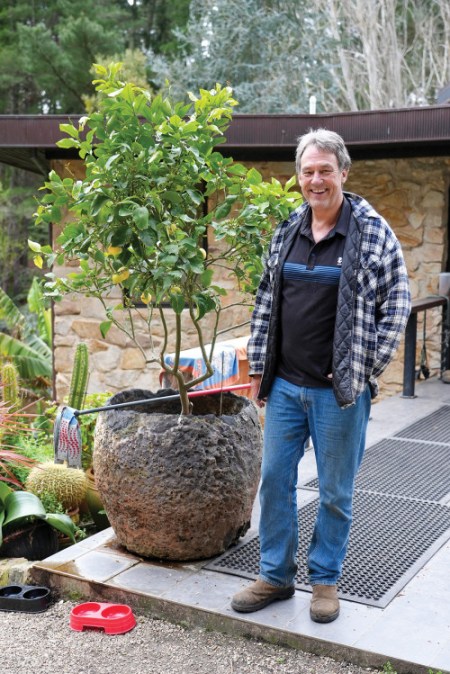
Flying in the face of convention, there has never been a grand masterplan when it comes to the garden’s design. Instead, Drew’s philosophy has been to create “rooms”, each with its own unique character, style and plant palette based on what best suits a particular location’s orientation and use.
The latest space, overlooking the large dam, is encircled by large pines. Stone-edged, informally shaped garden beds incorporating the existing silver birch trees have been laid out with paths in between and shade-loving tree ferns and Boston ferns planted extensively throughout. Along with multiple sitting spots in this new area, a deck was constructed by the lake. A dining table and firepit were added, making it the perfect spot for late afternoon or twilight drinks while dragging up entree from the yabbie nets.
Water is an essential element of this garden – both for irrigation and aesthetics – and there’s plenty around. The number of well-worn railway sleeper bridges throughout the property is testament to that. Apart from the substantial main dam, there are a number of other water collection sumps, plus spring-fed streams, even a Viktor Mednis-created water grotto.
Light ripping of the soil to increase water penetration and copious tonnes of woodland mulch spread far and wide have all contributed immensely to soil moisture retention.
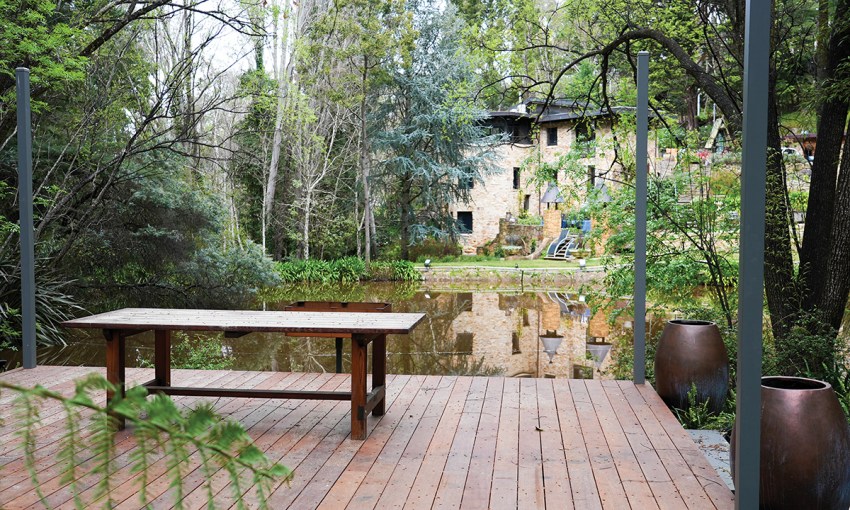
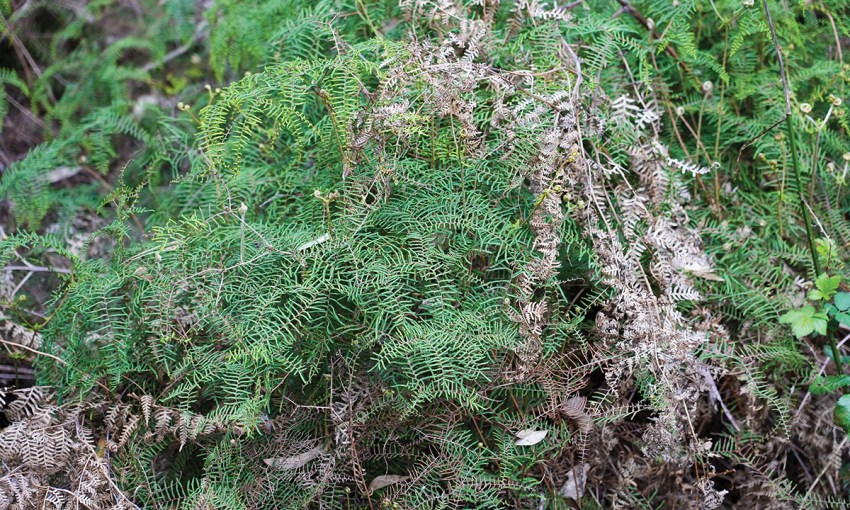
Of course, a big property needs plenty of plants. To help the budget, Drew has propagated and potted thousands of plants himself, some by tissue culture and some by division. While he revels in being able to populate the gardens by his own hand, he is the first to admit that planting can be an experiment, with plenty of successes and the odd failure or three.
There’s no shortage of slopes and key to stabilising these has been to add as many plants as possible for their soil-binding attributes. Clever use of old tyres has also provided a solution. The degassed, soil filled tyres planted with viburnum tinus, make an easy-to-install, earth-stopping, inclined garden edge.
There are plenty of boggy spots around and one plant happy to thrive in these conditions – which happens to one of Drew’s favourites – is gunnera. Also known as giant rhubarb or dinosaur food, this large clump-forming, perennial can grow to three metres high and five metres wide. It is thoroughly enjoying the organics-rich, shaded creek bed at Beverina.
Adjacent the gunnera is a cluster of the rare coral fern. With only two known locations in South Australia where it grows naturally, this aptly named plant, resembling a sea of wavy green coral, appears healthy and very much at home. Although, to Drew’s disappointment, he’s never been able to successfully propagate a plant.
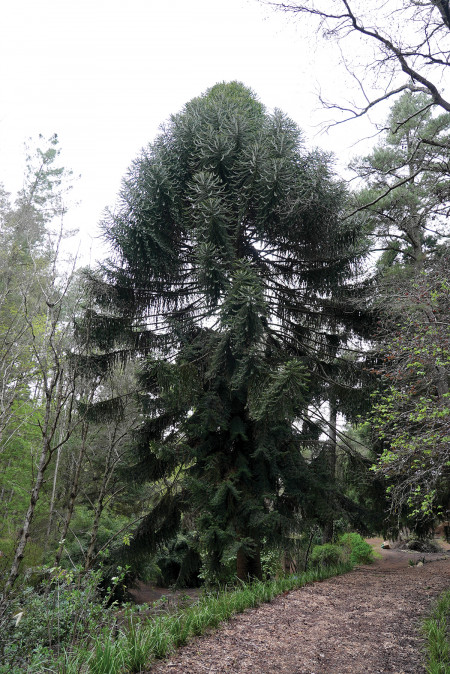
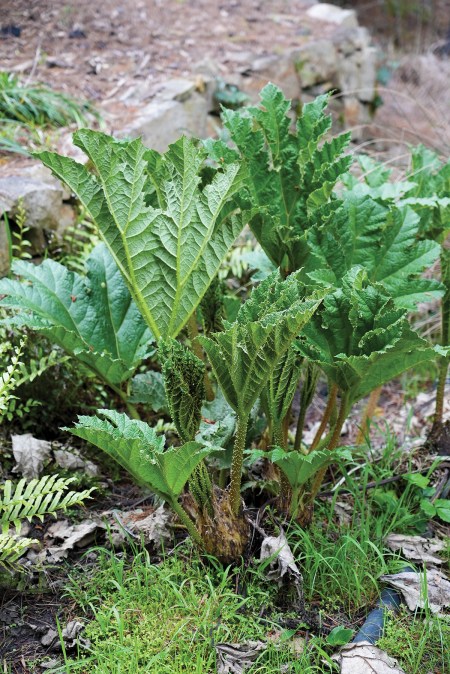
Among the many mature trees on the property, there is one that stands apart – quite literally. Another of Drew’s favourites, it’s an impressive bunya pine. Reaching in excess of 30 metres tall, this Australian rainforest native with its distinctive domed habit produces huge, 10-kilogram cones filled with masses of tasty, edible seeds. Visitors are always advised to give the tree a wide berth during its fruiting and subsequent falling season over summer.
As with many areas of the Adelaide Hills, scars from the Ash Wednesday bushfires are still evident here. The scorched tree bark and burnt outhouse buildings still standing just 150 metres from the main house are a constant reminder of the devastating effects fire can wreak across the district.
Lines of viburnum and lavender hedges direct traffic along the many pathways, while masses of budding roses border yet another slope. There is also a gazebo planted for a forest of figs to grow over, cascading and carpeting ground covers, an enviable 200-square-metre veggie patch, and so much more. This is a garden of plenty.
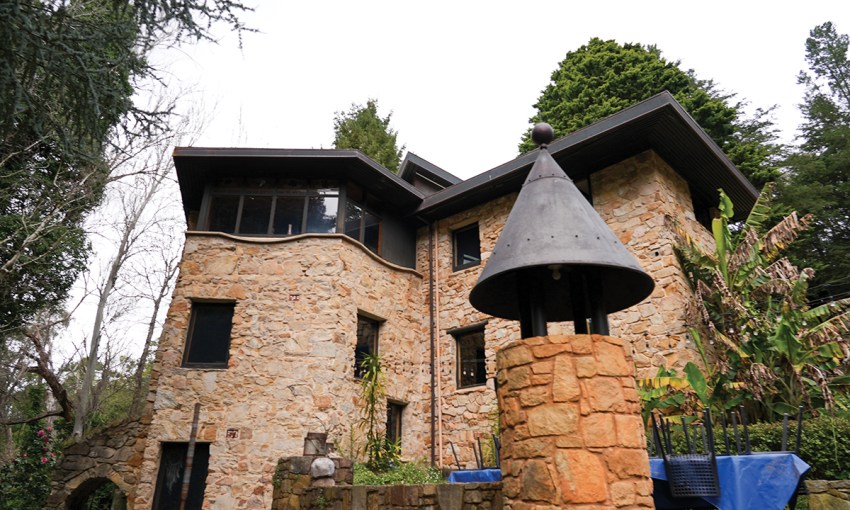
Along with plants, lawns share a special place here. Whether in large, recreational expanses or smaller, more intimate spaces, turf has multiple functions – from capturing and absorbing rainwater to allowing uninterrupted views between garden plots. There is also an ideal spot to enjoy outdoor cinema experiences in the warmer months, with movies shown on a makeshift screen.
What an achievement it has been for Drew and Josephine to transform a blanket of blackberries into a wonderfully energetic and environmentally vibrant property. Smart water catchment, sustainable practices and a sense of adventure are all evident.
Drew notes, with a tinge of excitement, that he sees another 20 years of developing, experimenting and garden creation ahead. We certainly wish them all the very best on that journey.
Beverina will be open for Open Gardens SA on November 27 and 28, 2021. opengardensa.org.au
This article first appeared in the November 2021 issue of SALIFE magazine.



